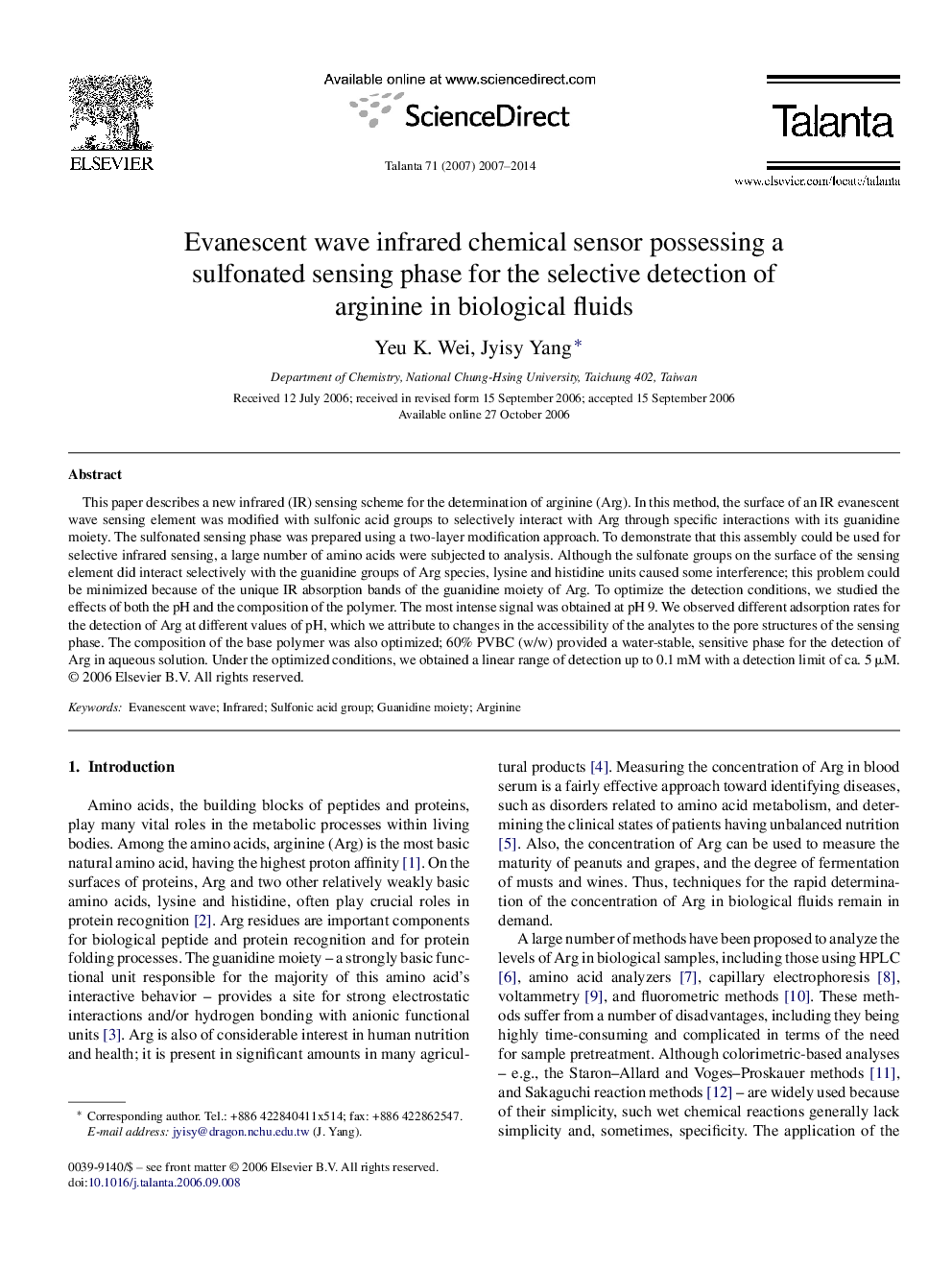| Article ID | Journal | Published Year | Pages | File Type |
|---|---|---|---|---|
| 1245920 | Talanta | 2014 | 8 Pages |
Abstract
This paper describes a new infrared (IR) sensing scheme for the determination of arginine (Arg). In this method, the surface of an IR evanescent wave sensing element was modified with sulfonic acid groups to selectively interact with Arg through specific interactions with its guanidine moiety. The sulfonated sensing phase was prepared using a two-layer modification approach. To demonstrate that this assembly could be used for selective infrared sensing, a large number of amino acids were subjected to analysis. Although the sulfonate groups on the surface of the sensing element did interact selectively with the guanidine groups of Arg species, lysine and histidine units caused some interference; this problem could be minimized because of the unique IR absorption bands of the guanidine moiety of Arg. To optimize the detection conditions, we studied the effects of both the pH and the composition of the polymer. The most intense signal was obtained at pH 9. We observed different adsorption rates for the detection of Arg at different values of pH, which we attribute to changes in the accessibility of the analytes to the pore structures of the sensing phase. The composition of the base polymer was also optimized; 60% PVBC (w/w) provided a water-stable, sensitive phase for the detection of Arg in aqueous solution. Under the optimized conditions, we obtained a linear range of detection up to 0.1 mM with a detection limit of ca. 5 μM.
Related Topics
Physical Sciences and Engineering
Chemistry
Analytical Chemistry
Authors
Yeu K. Wei, Jyisy Yang,
